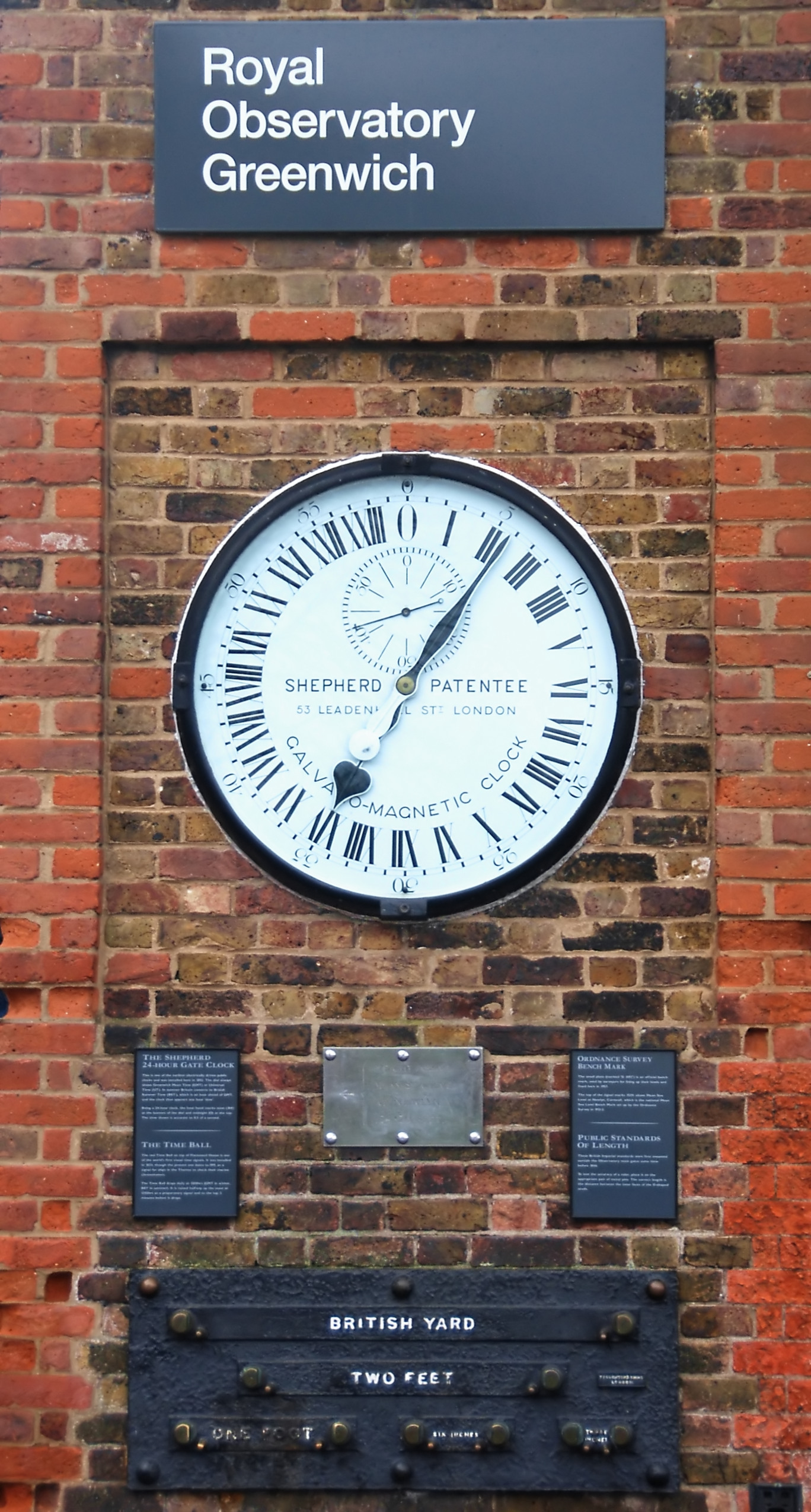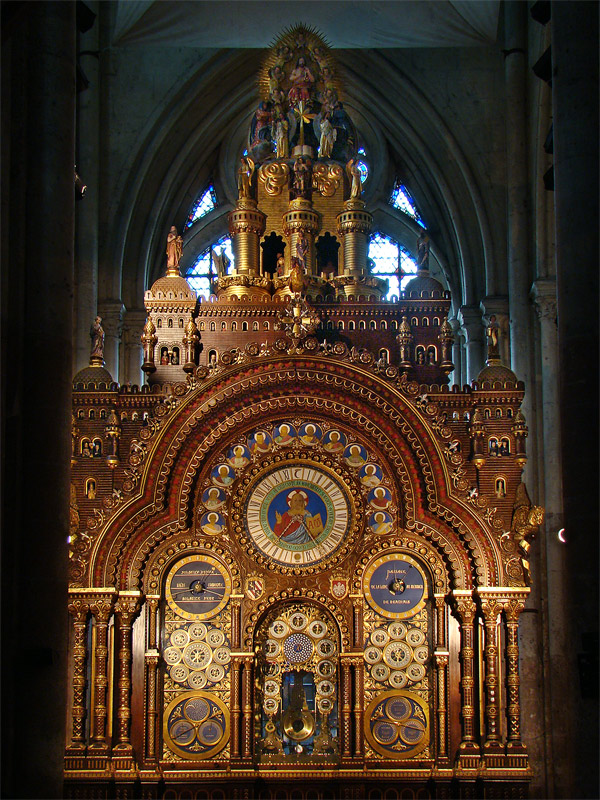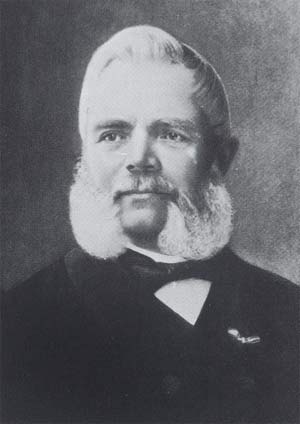|
Computus Clock
A computus clock is a clock equipped with a mechanism that automatically calculates and displays, or helps determine, the date of Easter (and other dependent dates of Moveable feast, moveable Church feasts). A computus watch carries out the same function. Background The movement of a computus clock provides and/or calculates astronomical and calendar information according to the tradition that Easter Sunday is the first Sunday after the first full moon (Paschal or ecclesiastical full moon) on or after the spring equinox (21 March), and Easter Sunday should not occur on the same day as the Jewish calendar date Nisan 15th, the first day of Passover week. In early Christianity, the Easter date was calculated each year and announced by the Pope. The later need for Christian clergy living in different territories to be able to calculate the Easter date for themselves forced attempts to establish clear rules for the Easter date calculation and finally the algorithms for this. The deter ... [...More Info...] [...Related Items...] OR: [Wikipedia] [Google] [Baidu] |
Astrarium Of Giovanni Dondi Dell'Orologio
The Astrarium of Giovanni Dondi dell'Orologio was a complex astronomical clock built between 1348 and 1364 in Padova, Italy, by the doctor and clock-maker Giovanni Dondi dell'Orologio. The Astrarium had seven faces and 107 moving parts; it showed the positions of the sun, the moon and the five planets then known, as well as religious feast days. It was one of the first mechanical clocks to be built in Europe. The ''Tractatus astrarii'' Dondi documented the Astrarium in detail in the ''Tractatus astrarii'', which is the earliest complete surviving description of its kind; the St Albans abbey clock designed by Richard of Wallingford predates it, but survives only as fragments (reconstructed by John North). In the introduction, Dondi writes that his machine was built in accordance with the 13th-century ''Theorica planetarum'' of Campano di Novara, and to demonstrate the validity of the descriptions of the motion of heavenly bodies of Aristotle and Avicenna. The ''Tractatus ... [...More Info...] [...Related Items...] OR: [Wikipedia] [Google] [Baidu] |
Clocks
A clock or a timepiece is a device used to measure and indicate time. The clock is one of the oldest human inventions, meeting the need to measure intervals of time shorter than the natural units such as the day, the lunar month and the year. Devices operating on several physical processes have been used over the millennia. Some predecessors to the modern clock may be considered as "clocks" that are based on movement in nature: A sundial shows the time by displaying the position of a shadow on a flat surface. There is a range of duration timers, a well-known example being the hourglass. Water clocks, along with the sundials, are possibly the oldest time-measuring instruments. A major advance occurred with the invention of the verge escapement, which made possible the first mechanical clocks around 1300 in Europe, which kept time with oscillating timekeepers like balance wheels., pp. 103–104., p. 31. Traditionally, in horology, the term ''clock'' was used for a stri ... [...More Info...] [...Related Items...] OR: [Wikipedia] [Google] [Baidu] |
Watches
A watch is a portable timepiece intended to be carried or worn by a person. It is designed to keep a consistent movement despite the motions caused by the person's activities. A wristwatch is designed to be worn around the wrist, attached by a watch strap or other type of bracelet, including metal bands, leather straps or any other kind of bracelet. A pocket watch is designed for a person to carry in a pocket, often attached to a chain. Watches were developed in the 17th century from spring-powered clocks, which appeared as early as the 14th century. During most of its history the watch was a mechanical device, driven by clockwork, powered by winding a mainspring, and keeping time with an oscillating balance wheel. These are called '' mechanical watches''. In the 1960s the electronic ''quartz watch'' was invented, which was powered by a battery and kept time with a vibrating quartz crystal. By the 1980s the quartz watch had taken over most of the market from the mec ... [...More Info...] [...Related Items...] OR: [Wikipedia] [Google] [Baidu] |
Klinghammer's Computus
Klinghammer's computus is a mechanism determining the elements of the computus, in particular the date of Easter in the Gregorian calendar. This mechanism was built in the 1970s by Frédéric Klinghammer (1908–2006) and is nearly a reduced model of the computus found on the Strasbourg cathedral astronomical clock. Frédéric Klinghammer (1908-2006) Frédéric Klinghammer was a former employee of the Ungerer company, a company which used to take care of the Strasbourg astronomical clock. He was then seriously involved in the design and building of the Messina astronomical clock. Later, he set down in Moulins (France) and spend the 1970s in Morocco where he built his computus. How it works Klinghammer's computus works along the lines of Jean-Baptiste Schwilgué's computus, which was described in the reference books of 1922 and 1992. Klinghammer's computus was restored by Joseph Flores in 2006-2007 who published a book on it. Flores' book was the subject of critiques, in part becaus ... [...More Info...] [...Related Items...] OR: [Wikipedia] [Google] [Baidu] |
Beauvais Astronomical Clock
The Beauvais Astronomical Clock is a nineteenth-century astronomical clock in Beauvais Cathedral in northern France.Michelin Green Guide to France. Michelin. 2010. History and description The clock was built between 1865 and 1868 by Lucien Auguste Vérité. It is 12 metres high, and 6 metres wide. The 52 dials display the times of the rising and setting sun and moon, the position of the planets, the current time in 18 cities around the world, and the tidal times. The clock also displays the epact (i.e. age of the moon in days on January 1) and the golden number used in calculating the date of Easter. The hours and minutes are shown in the large central face which depicts Jesus Christ and the twelve apostles. An 1886 edition of ''Blackwood's Edinburgh Magazine'' remarks that: "In the eyes of the neighbourhood the chief wonder of Beauvais is not the cathedral, but the astronomical clock...The mechanical part is admirable. It tells everything which any one can wish to know." R ... [...More Info...] [...Related Items...] OR: [Wikipedia] [Google] [Baidu] |
Patek Philippe
Patek Philippe SA is a Swiss luxury watch and clock manufacturer, located in the Canton of Geneva and the Vallée de Joux. Established in 1839, it is named after two of its founders, Antoni Patek and Adrien Philippe. Since 1932, the company has been owned by the Stern family in Switzerland and remains the last family-owned independent watch manufacturer in Geneva. Patek Philippe is one of the oldest watch manufacturers in the world with an uninterrupted watchmaking history since its founding. It designs and manufactures timepieces as well as movements, including some of the most complicated mechanical watches. The company maintains over 400 retail locations globally and over a dozen distribution centers across Asia, Europe, North America, and Oceania. In 2001, it opened the Patek Philippe Museum in Geneva. Patek Philippe is widely considered to be one of the most prestigious watch manufacturers in the world. Over the years, notable Patek Philippe patrons and timepiec ... [...More Info...] [...Related Items...] OR: [Wikipedia] [Google] [Baidu] |
Calibre 89
The Patek Philippe Calibre 89 is a commemorative pocket watch created in 1989, to celebrate the company's 150th anniversary. Declared by Patek Philippe as ''"the most complicated watch in the world"'' at the time of creation, it has 33 complications, weighs 1.1 kg, exhibits 24 hands and has 1,728 components in total, including a thermometer, and a star chart. Before Calibre 89, Patek Philippe Henry Graves Supercomplication (created in 1933) had been the world’s most complicated timepiece ever assembled with a total of 24 different functions. Patek Philippe Calibre 89 was made from 18 carat (75%) gold or platinum, with an estimated value of $6 million. It took five years of research and development, and four years to manufacture. Four watches were made: one in white gold, one in yellow gold, one in rose gold and one in platinum. The yellow-gold and the white-gold Calibre 89 were sold at auction by Antiquorum in 2009 and 2004, respectively, and both watches currently rank a ... [...More Info...] [...Related Items...] OR: [Wikipedia] [Google] [Baidu] |
Jens Olsen's World Clock
Jens Olsen's World Clock or Verdensur is an advanced astronomical clock which is displayed in Copenhagen City Hall. The clock was designed and calculated by Jens Olsen (1872–1945), who was a skilled locksmith, and later learned the trade of clockmaking. He also took part in the beginning of the clock's construction, and died in 1945, 10 years before the clock was completed. The clock consists of 12 movements which together have 15,448 parts. The clock is mechanical and must be wound once a week. Displays include lunar and solar eclipses, positions of the stellar bodies, and a perpetual calendar, in addition to the time. The fastest gear completes a revolution every ten seconds and the slowest every 25,753 years. The calculations for the clock were made up until 1928, after which they were supervised by the astronomer Elis Strömgren Svante Elis Strömgren (31 May 1870 – 5 April 1947) was a Sweden, Swedish–Denmark, Danish astronomer. Strömgren was born in 1870 in H ... [...More Info...] [...Related Items...] OR: [Wikipedia] [Google] [Baidu] |
Jens Olsen
Jens Olsen (27 July 1872 – 17 November 1945) was a clockmaker, locksmith and astromechanic who built the famous world clock located in the city hall of Copenhagen, the Rådhus. He was born in Ribe, Denmark. Ever since he was a small child, Olsen was interested in clocks and other mechanical devices. After hearing of the broken clock in Carsten Hauch's '' A Polish Family'', he dreamed of fixing that clock. Later, he envisioned a clock that would show every conceivable type of time, from sidereal time to the rotation of the planets. Olsen's father was a weaver but apprenticed Olsen to a locksmith. However, he remained interested in clocks and read as much as he could about them and later astronomy. Even after ending his apprenticeship and becoming a locksmith Olsen continued to pursue these interests. In 1897, Olsen became a journeyman and eventually ended up in Strasbourg where he saw the famous clock built by Jean-Baptiste Schwilgué in the cathedral. He would hid ... [...More Info...] [...Related Items...] OR: [Wikipedia] [Google] [Baidu] |
Strasbourg Astronomical Clock
The Strasbourg astronomical clock is located in the Cathédrale Notre-Dame of Strasbourg, Alsace, France. It is the third clock on that spot and dates from the time of the first French possession of the city (1681–1870). The first clock had been built in the 14th century, the second in the 16th century, when Strasbourg was a Free imperial city of the Holy Roman Empire. The current, third clock dates from 1843. Its main features, besides the automata, are a perpetual calendar (including a ''computus''), an orrery (planetary dial), a display of the real position of the Sun and the Moon, and solar and lunar eclipses. The main attraction is the procession of the 18 inch high figures of Christ and the Apostles, which occurs every day at solar noon, while the life-size cock crows thrice. Clocks First clock The Third of its kind against the south transept. The name of its maker is not known. This clock was known as the "Three Kings clock" and had several automata. One of th ... [...More Info...] [...Related Items...] OR: [Wikipedia] [Google] [Baidu] |
Jean-Baptiste Schwilgué (1834) and James White (1822). Jean-Baptiste Schwilgué (born in Strasbourg in 1776, died in the same place in 1856) was the author of the third astronomical clock of Strasbourg Cathedral, built between 1838 and 1843 (not 1842, as it is written on the clock itself). In 1844 Schwilgué, together with his son Charles, patented a key-driven calculating machine (see the link in the External Links section), which seems to be the third key-driven machine in the world, after that of Luigi Torchi Luigi Torchi invented the first direct multiplication machine in 1834. History of Computers and Computing [...More Info...] [...Related Items...] OR: [Wikipedia] [Google] [Baidu] |




